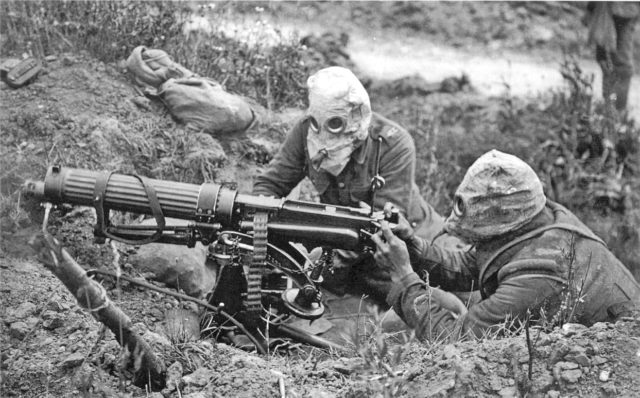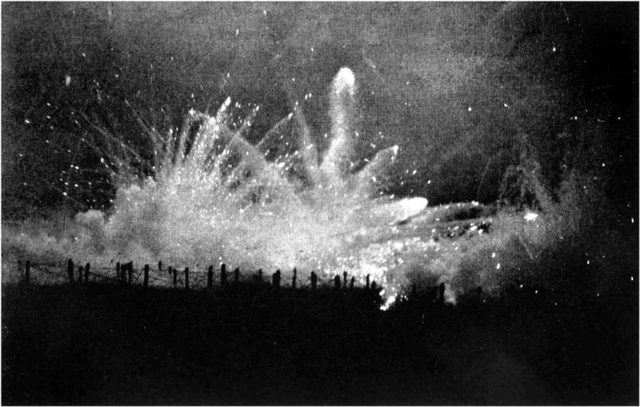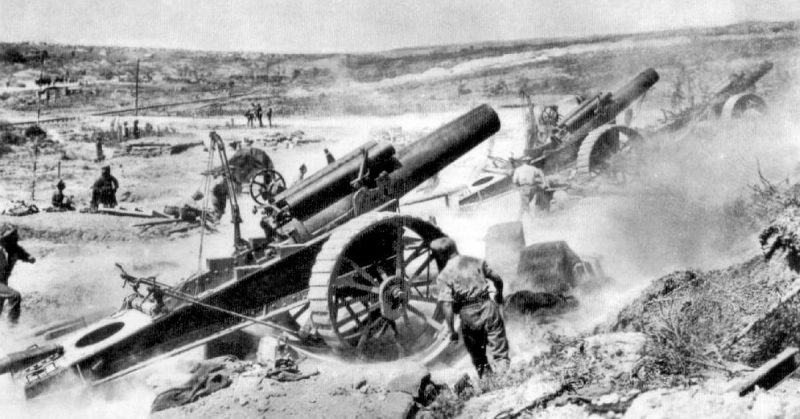The First World War remains one of the most deadly conflicts in human history, with massive casualties on both sides. Millions died and many more were injured, and this was largely due to the groundbreaking and horrifyingly effective weaponry that came to define early 20th Century warfare. Lumbering tanks, terrifying flame-throwers and powerful new warplanes were just a few of the military technologies that made the death toll so astronomically high.
However, three forms of weaponry, in particular, proved to be especially lethal. From one of the most mass-produced rifles in the world to enormous guns that could take out targets more than 100 kilometers away, here are the three deadliest weapons of the First World War.
Machine Guns
In the early 20th Century, the world was changing rapidly. After the Industrial Revolution of the 1800’s, new technological advances were being made at a greater rate than ever before. As the clouds of war gathered over Europe, the race was on to develop new and innovative weaponry for the conflict to come. Everything from self-loading pistols to submarines were changing the ways that a war could be fought.
One in particular, however, truly revolutionized land-based combat: the machine gun.
Of course, the concept of a rapid-fire weapon had been around for some time before the First World War. From the 18th Century Puckle Gun to the Gatling Gun of the mid 1800’s, there had been many previous attempts to create something of this kind.
However, the idea was perfected with the creation of the Maxim gun, designed in the late 19th Century. This, along with the Lewis Machine Gun, would go on to become a mainstay of military forces on both sides of the war, claiming thousands of lives and fundamentally altering the way the armies fought.

A single machine gun, operated by a small team of men, could repel a much larger force, making it even harder to break the stalemate of trench warfare on the Western Front. Although in later years these weapons became ever more sophisticated, they were still some of the deadliest in the First World War, as their high rate of fire often saw them mowing down enemies in staggering numbers.
Heavy Artillery
One of the defining features of the First World War – especially along the Western Front – was the advent of trench warfare. Across the European front both German and Allied forces dug fortified positions out of the earth, strengthening these lines with machine guns, barbed wire and landmines. The blasted earth between trenches was known as No Man’s Land, and as this strategy became more prevalent, the war ground to a deadlock.
A wide variety of tactics and technologies were employed to try and break this stalemate – poison gas, underground tunneling, and numerous others. A weapon that proved to be a particularly effective way of attacking enemy lines was artillery. New mortars and long-range cannon could be used to shell trenches at a great distance, resulting in massive casualties.

Not only were artillery guns effective in their own right, but they also worked as part of bigger offensive operations. If a large-scale infantry attack was being launched, artillery could weaken the enemy’s defenses in advance, or fire on reinforcements trying to come to their opponent’s aid. They also acted to drain morale, as the constant threat of shelling, not to mention the thunderous noise, could keep soldiers on edge and poorly rested.
While many weapons were responsible for the massive and previously unprecedented casualties of the First World War, heavy artillery proved to be the most deadly technology of the period.
Infantry Rifles
Although perhaps not the single deadliest form of weaponry during the First World War, rifles were certainly the most common and widespread during at the time. The bulk of all the military forces involved in the conflict consisted of infantry units, and the majority of these carried some form of rifle.
In the case of the British, it was the Lee-Enfield, one of the most mass-produced firearms in history. More than 17 million have been built over the years, and they were extremely wide-spread in their use during the first half of the 20th Century.
Initially appearing in the late 1800’s, the design was improved upon throughout the years, becoming one of the fastest bolt-action guns available at the time. There are even accounts of German soldiers believing that they were under fire from a heavy machine gun, when in reality they were facing a small squadron of well-trained riflemen carrying Lee-Enfields.
On the other side of the conflict, Germany was arming their men with the Gewehr 98, a bolt-action rifle that was even more mass-produced than the Lee-Enfield. In fact, more than 20 million have been created since this weapon was first built in 1895.
Although effective, accurate and generally reliable, these guns were not without their drawbacks. Their rate of fire was slower than that of their enemies, and they were more expensive to build. Despite these negative factors, however, they remain one of the most defining and deadly weapons of the First World War.
